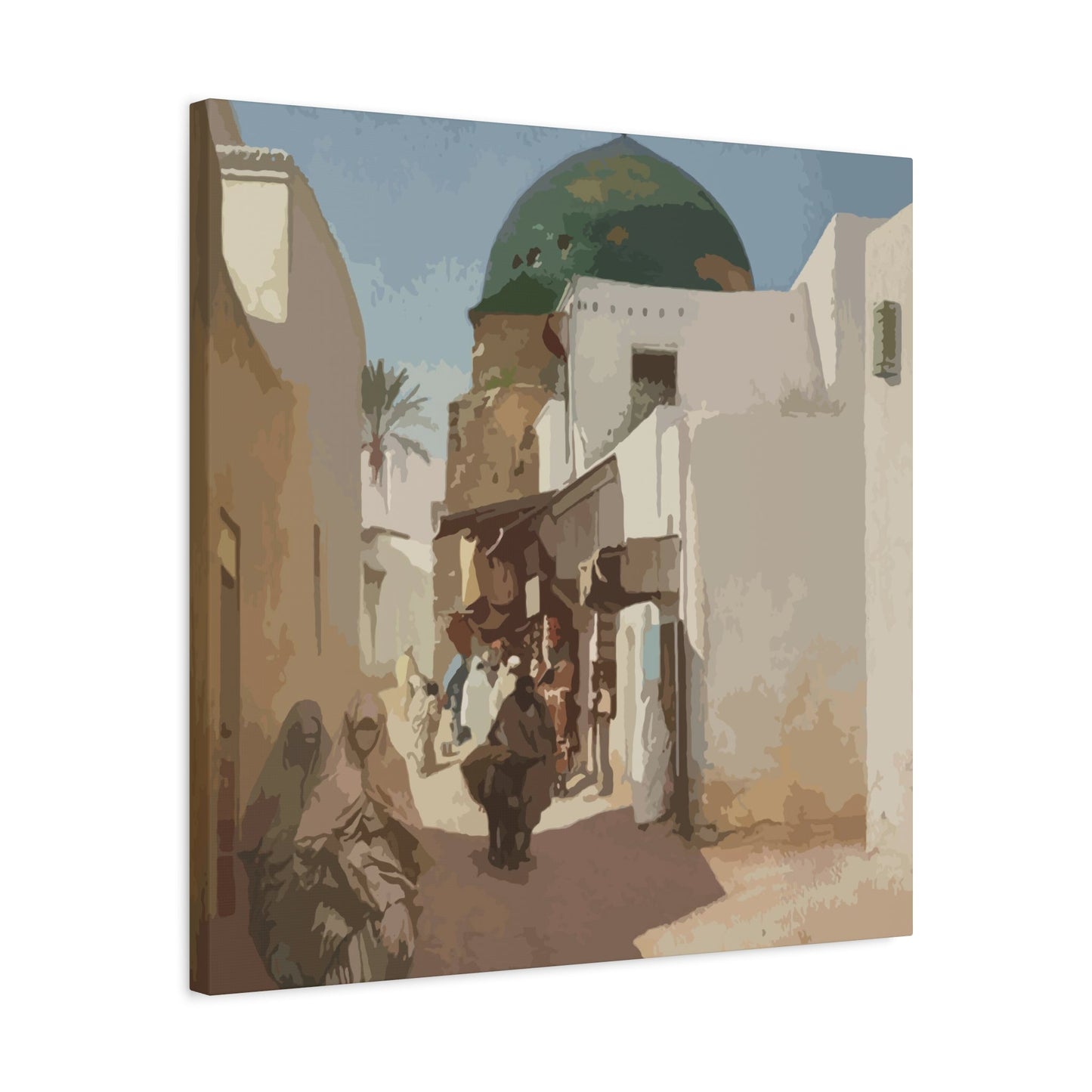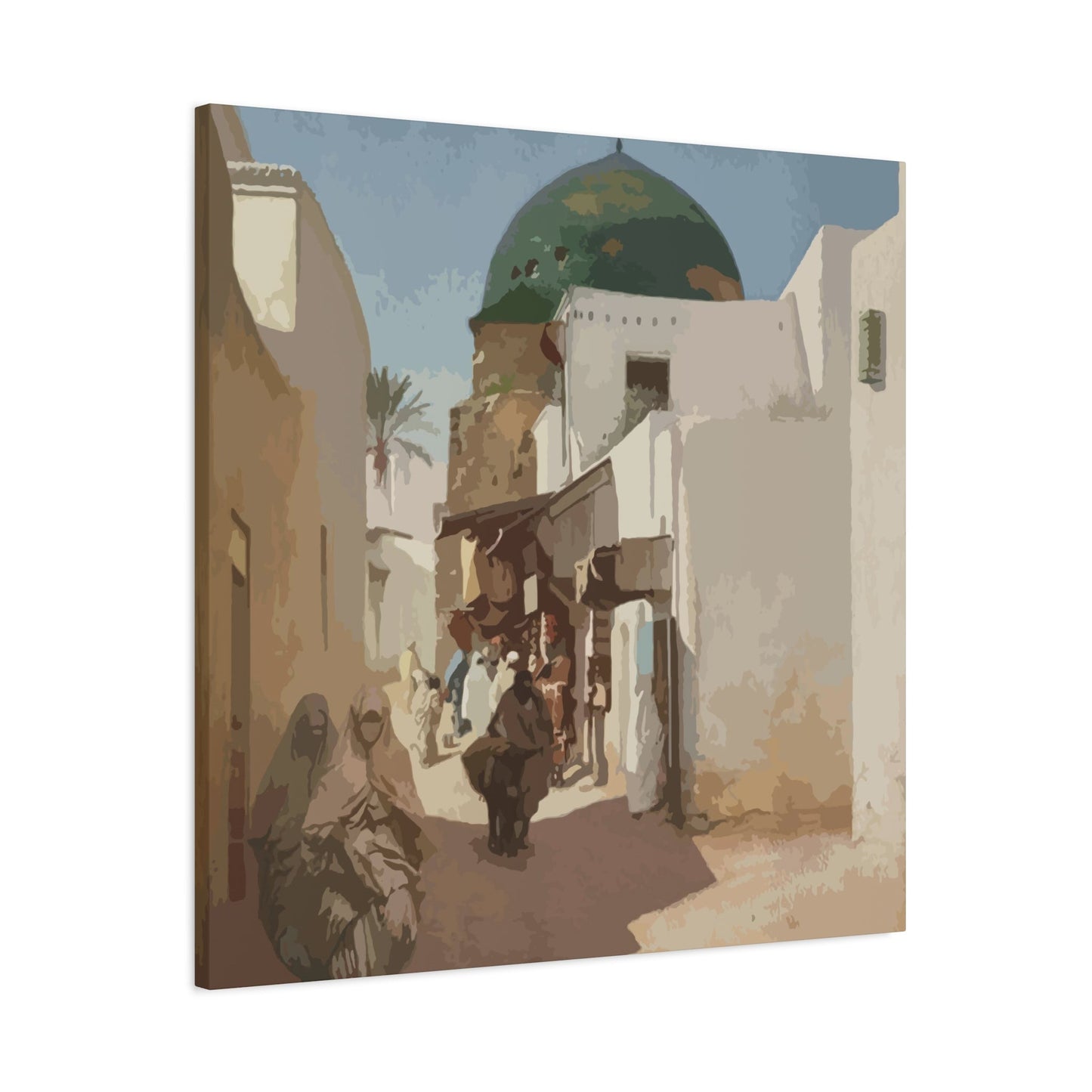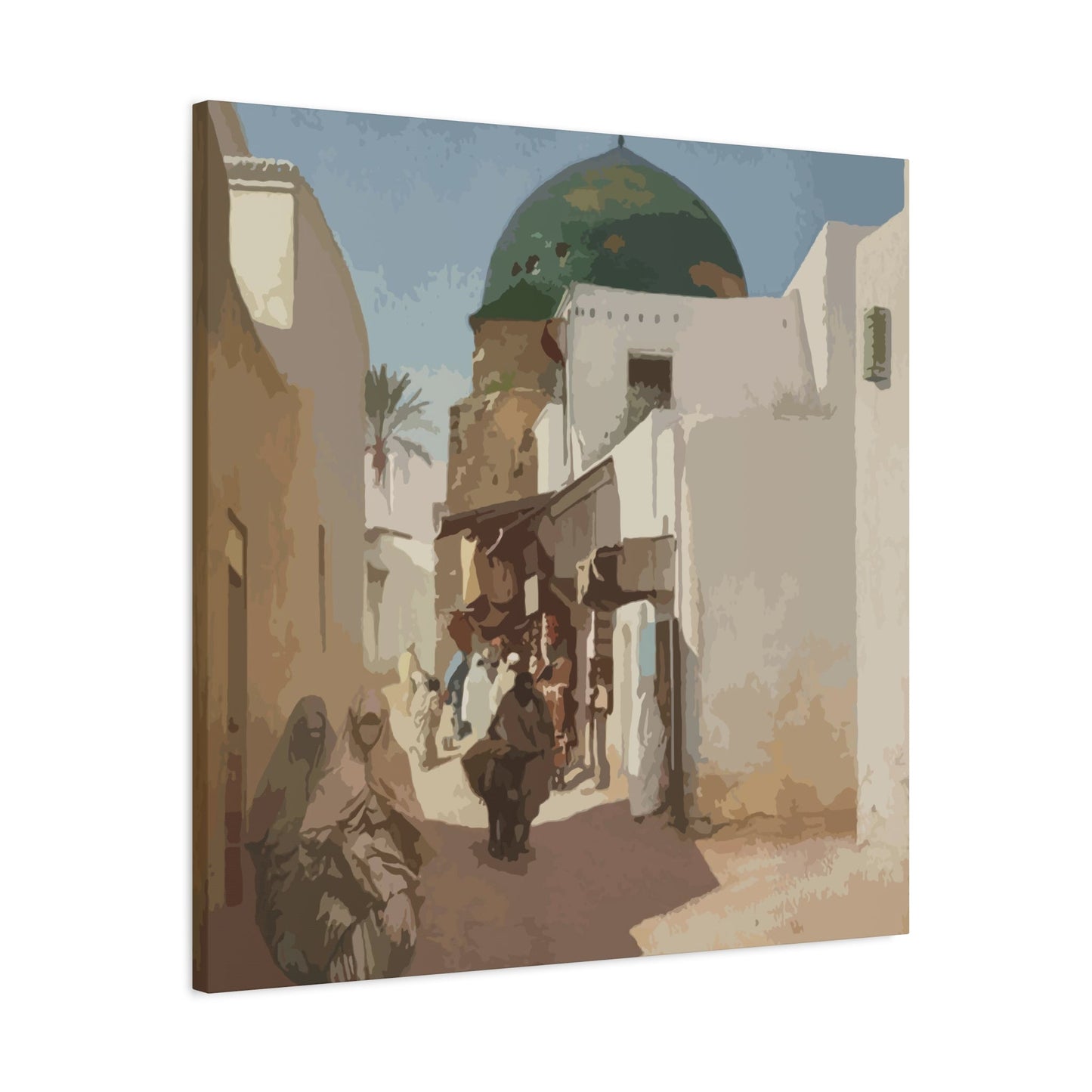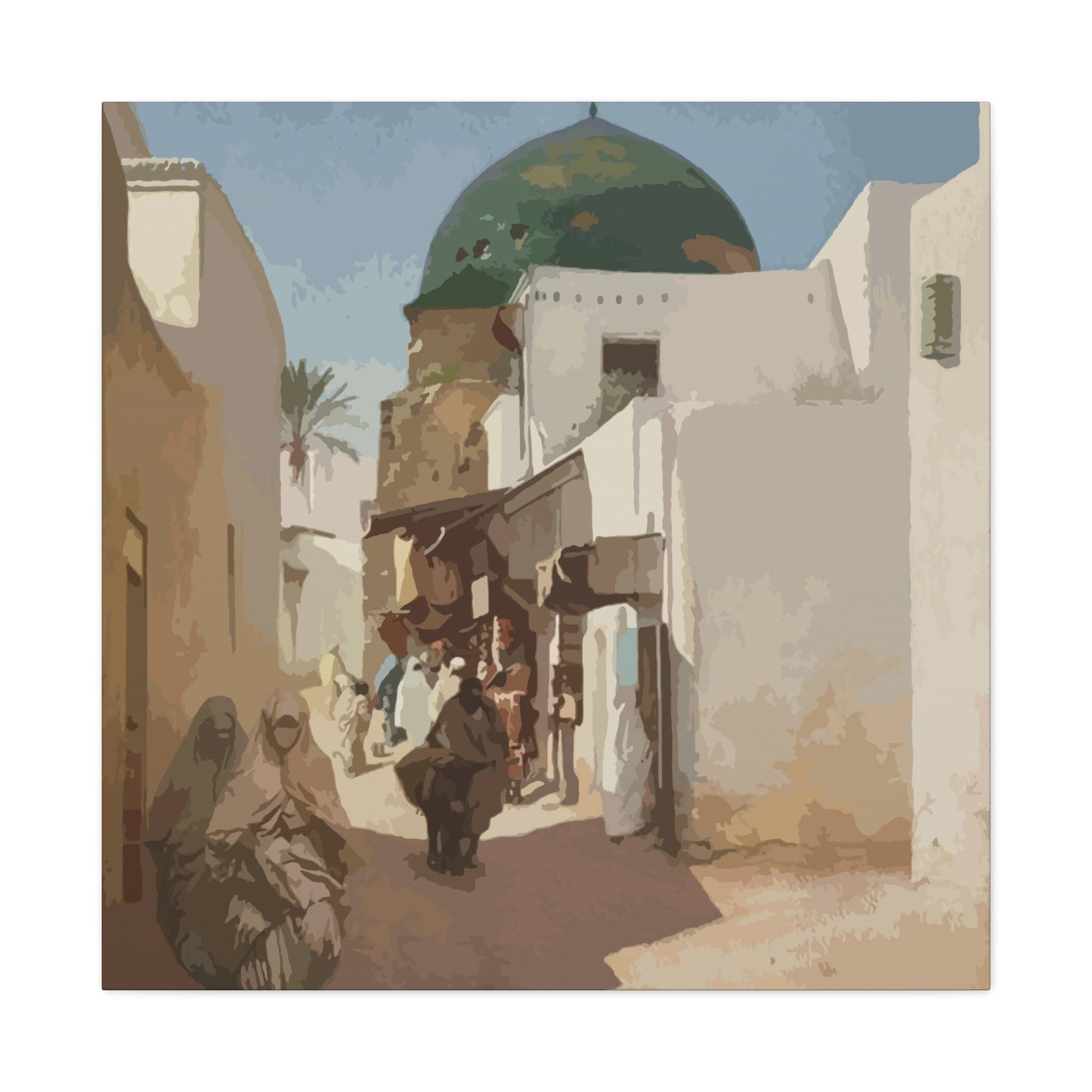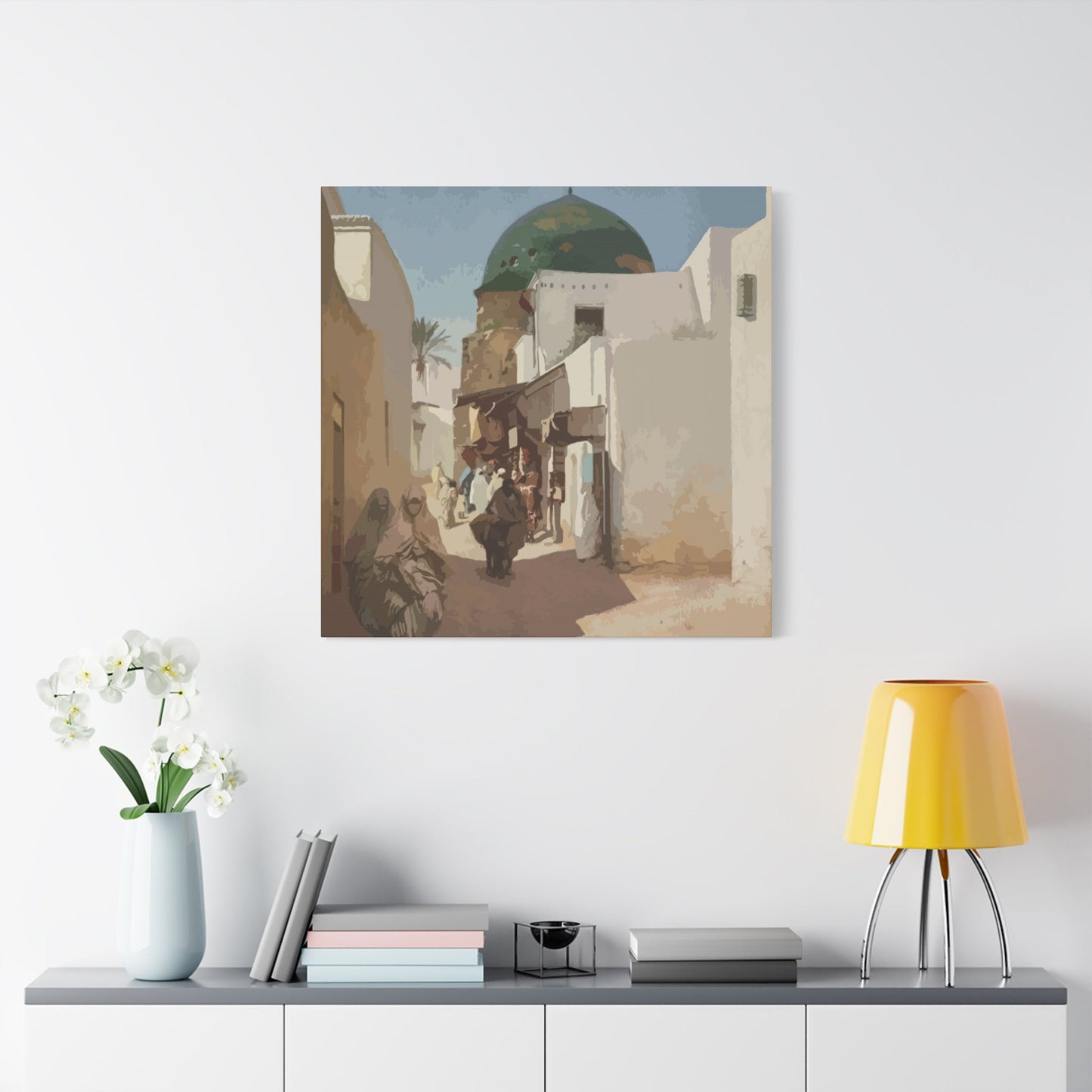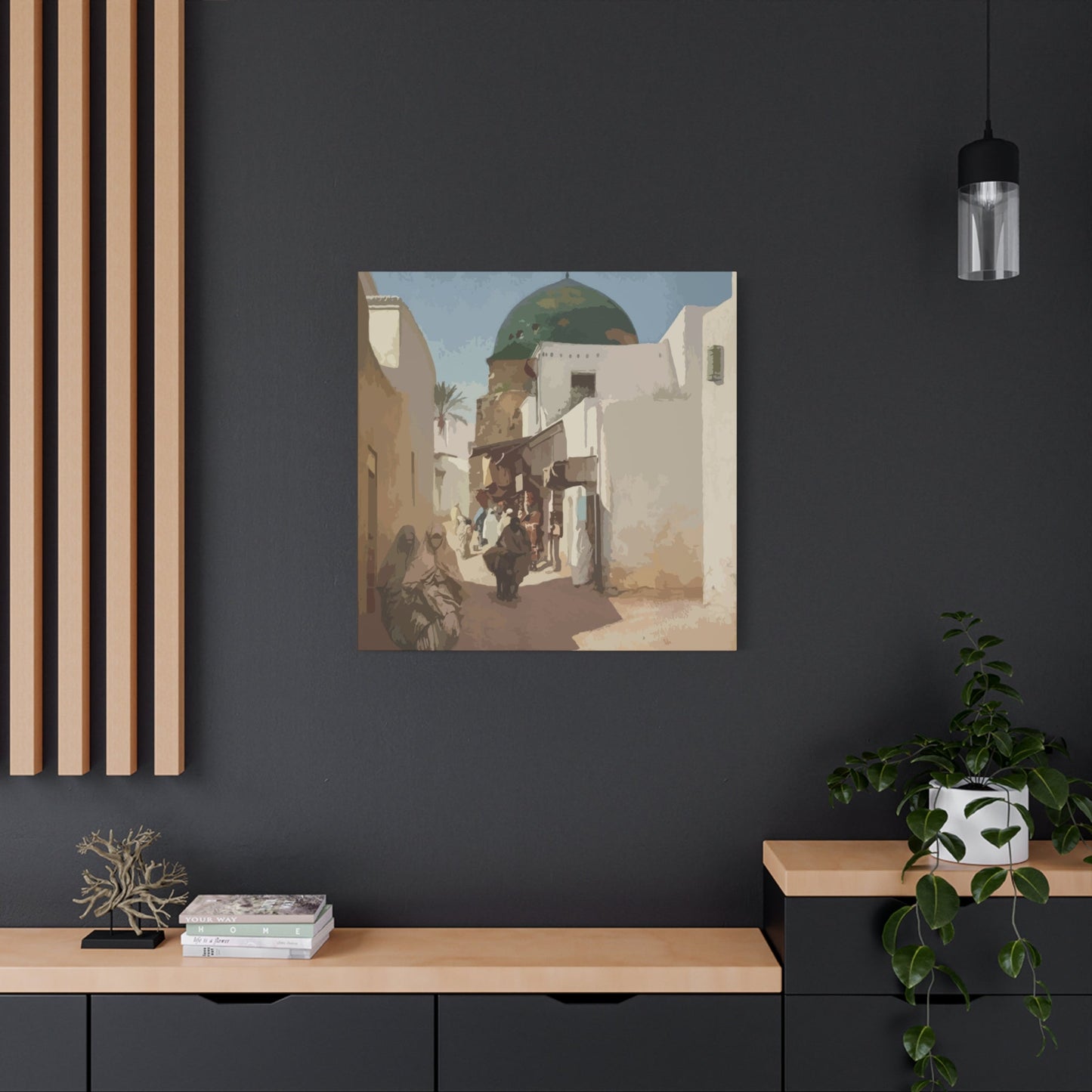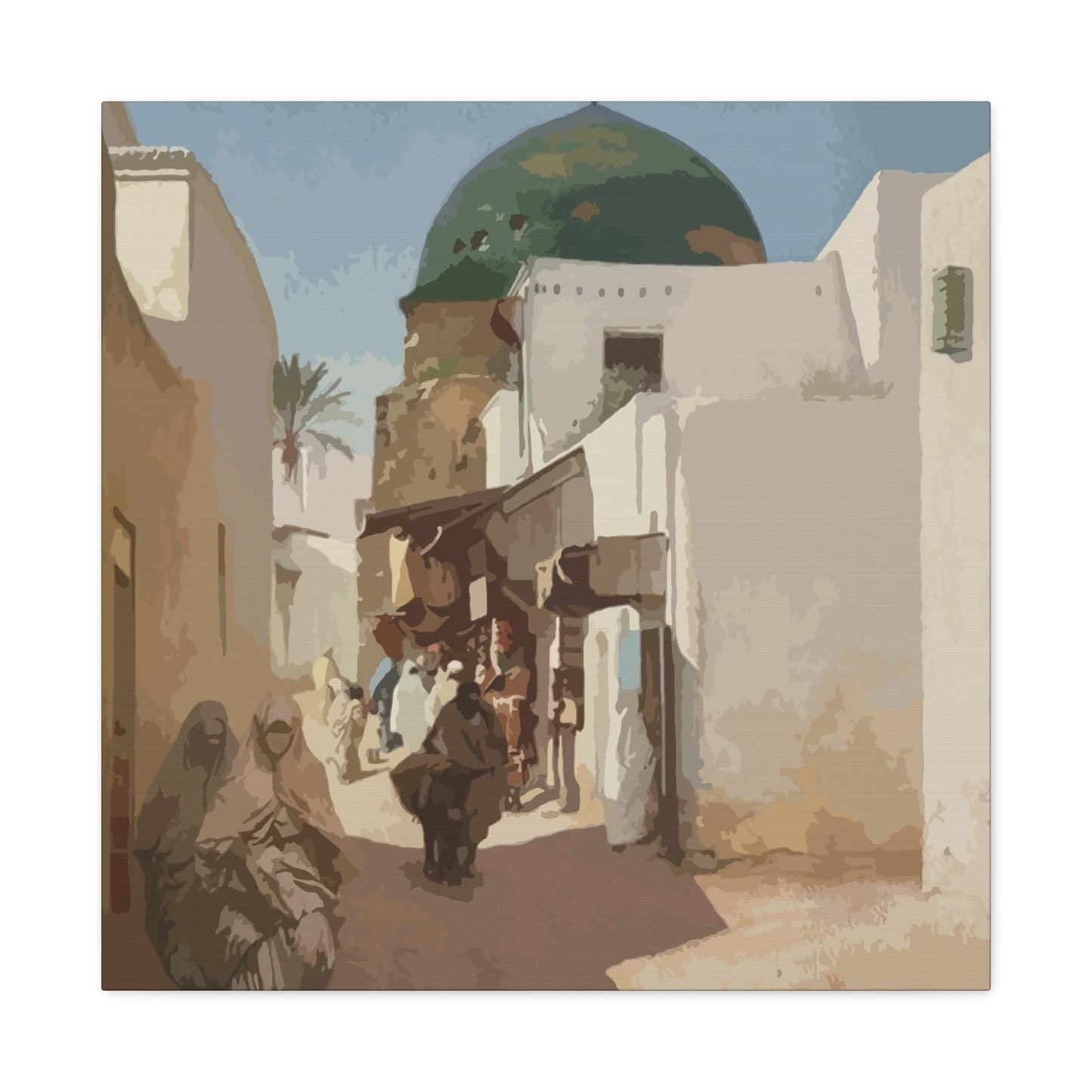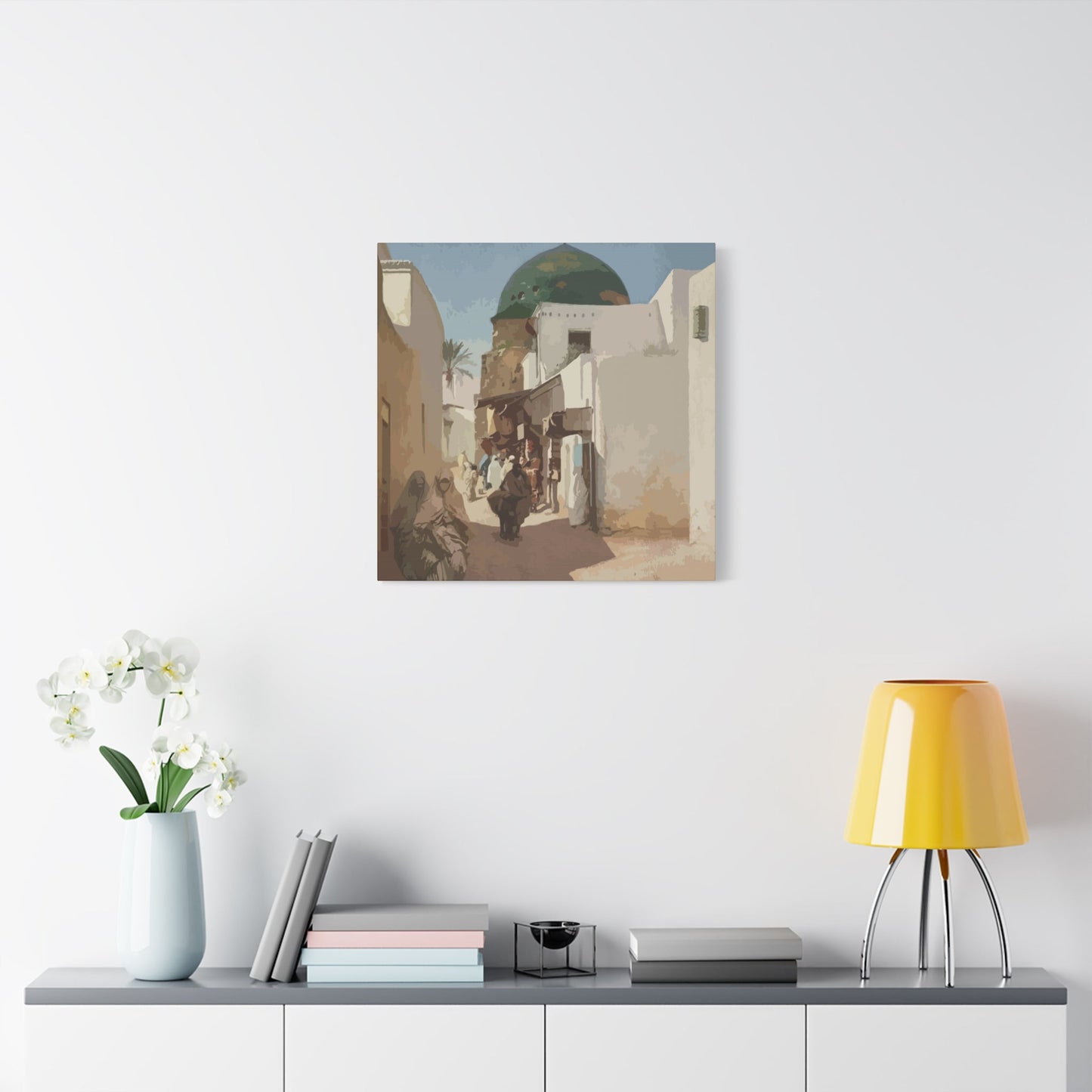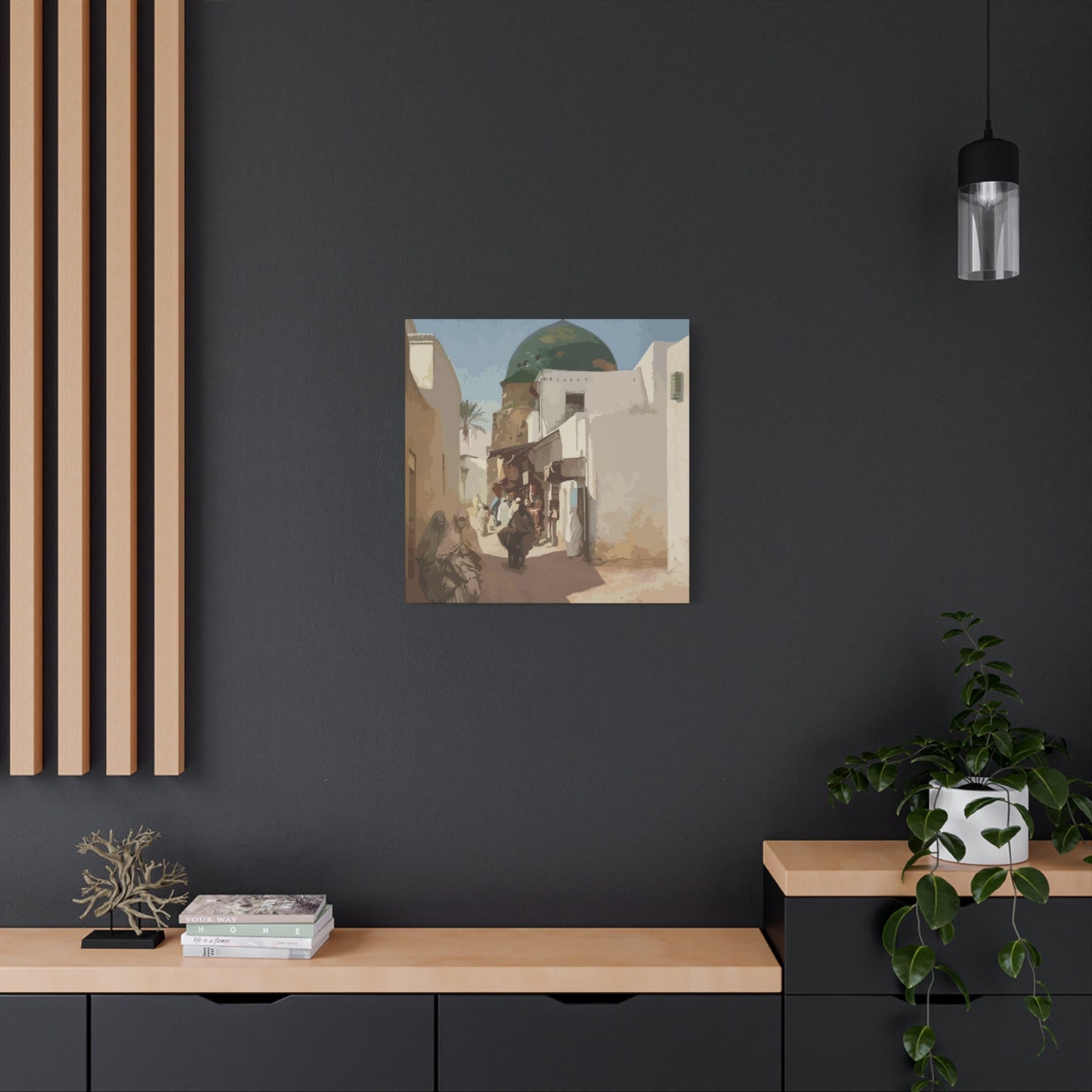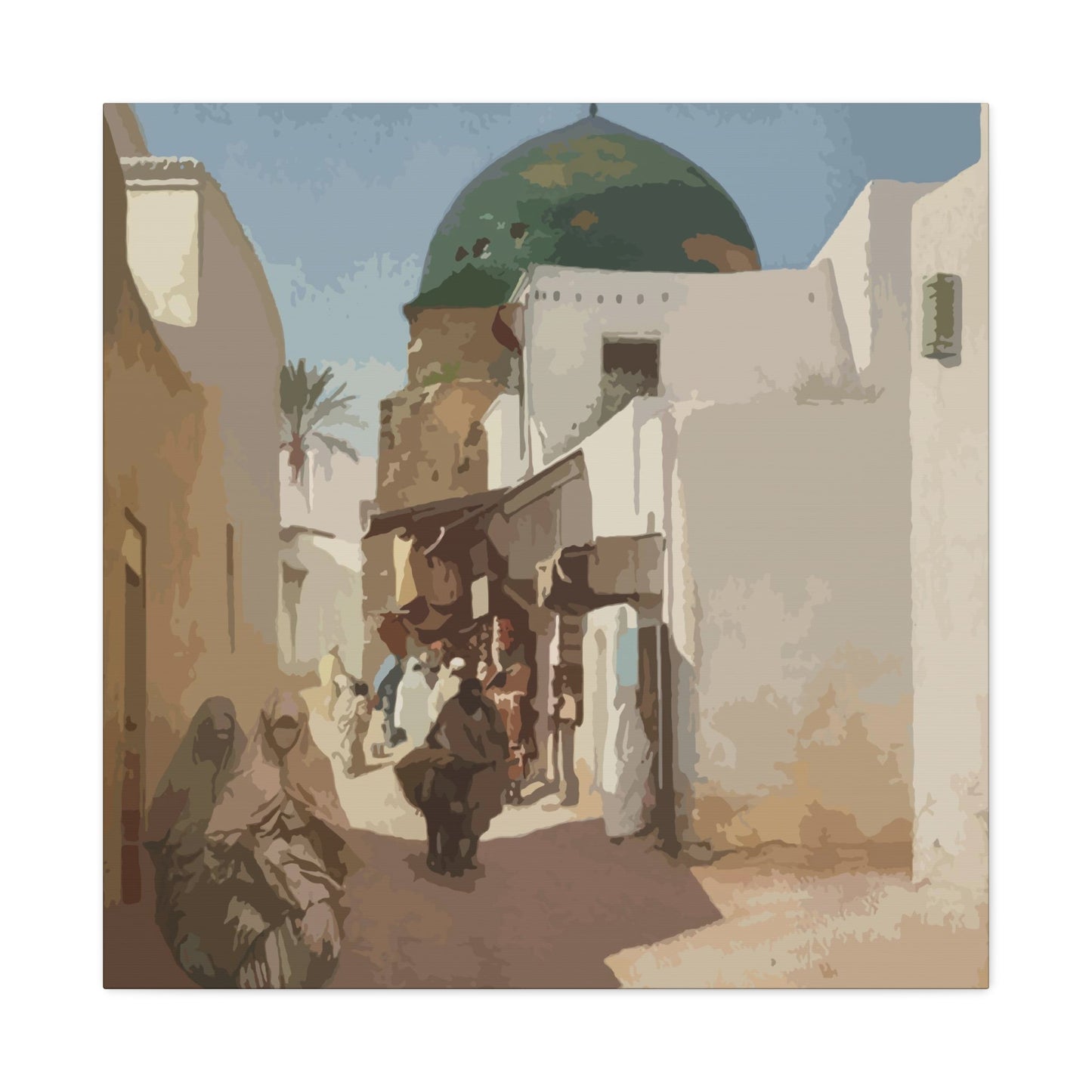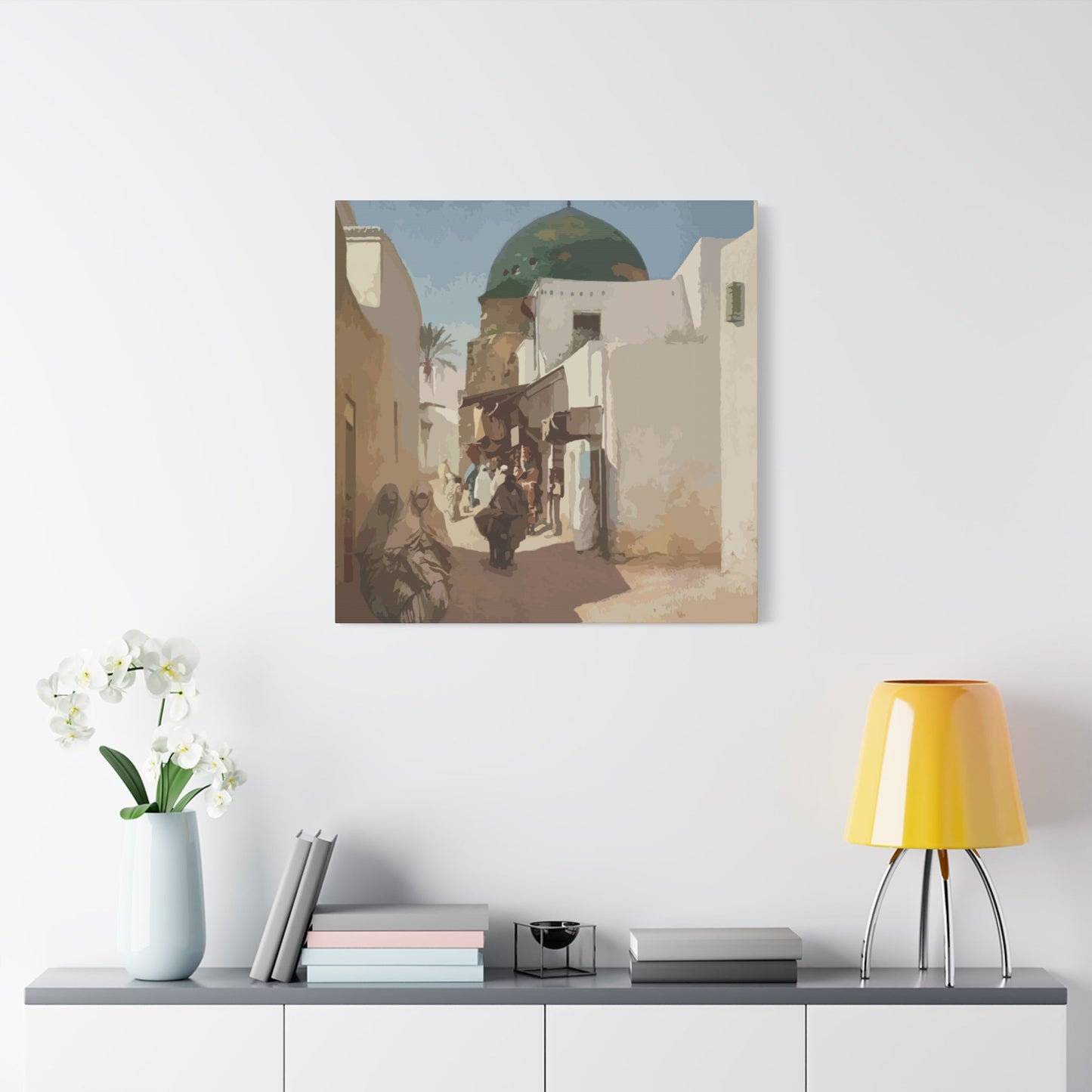Realism Wall Art: Exploring Artistic Truth Through Centuries of Creative Expression
The world of visual arts has been shaped by countless movements, each bringing its own philosophy and approach to creative expression. Among these movements, realism stands as one of the most enduring and influential styles, continuing to captivate viewers with its commitment to depicting life as it truly appears. This comprehensive exploration delves into the rich tapestry of realistic artistic expression, examining how this movement has evolved from its historical roots to its contemporary manifestations in wall art and beyond.
Realism represents more than just a technique or style; it embodies a philosophical approach to art that prioritizes truth and authenticity over idealization or fantasy. This movement has produced some of the most powerful and emotionally resonant works in art history, from intimate portraits that reveal the human condition to sweeping landscapes that capture the raw beauty of nature. As we journey through the various aspects of this remarkable artistic movement, we'll discover how realism continues to inspire and challenge artists while providing viewers with profound connections to the world around them.
Origins and Development of Realistic Artistic Expression
The emergence of realism as a distinct artistic movement can be traced back to the mid-19th century, though realistic depictions have existed throughout human history. The formal realism movement began as a reaction against the romantic idealism and classical traditions that dominated European art academies. Artists began to reject the notion that art should only depict noble subjects or mythological themes, instead turning their attention to everyday life and ordinary people.
This revolutionary approach to art-making first gained prominence in France during the 1850s, when artists began to challenge the established hierarchy of subjects deemed worthy of artistic attention. The movement represented a fundamental shift in how artists viewed their role in society, transforming them from mere decorators of aristocratic ideals to chroniclers of contemporary life. This change reflected broader social and political transformations occurring throughout Europe and America during this period.
The industrial revolution played a crucial role in shaping realistic artistic expression. As society underwent rapid changes, artists felt compelled to document these transformations, capturing the lives of factory workers, farmers, and urban dwellers with unprecedented honesty. This documentation became a form of social commentary, revealing the harsh realities of industrialization while celebrating the dignity of common people.
The philosophical underpinnings of realism drew heavily from positivist thinking, which emphasized empirical observation and scientific methodology. Artists began to approach their subjects with the same objective scrutiny that scientists applied to their research, observing light, shadow, color, and form with meticulous attention to detail. This scientific approach to art-making resulted in works that possessed an unprecedented level of visual accuracy and emotional authenticity.
Photography's invention in the early 19th century profoundly influenced the development of realistic artistic expression. While some initially viewed photography as a threat to traditional painting, forward-thinking artists recognized it as a powerful tool for studying form, composition, and light. Many realist painters used photographic references to achieve greater accuracy in their work, while others were inspired by photography's ability to capture fleeting moments and candid expressions.
The spread of realism across different countries and cultures led to unique regional interpretations of the movement. American realists, for example, focused heavily on frontier life and the rapidly changing landscape of the New World. Russian realists often incorporated social and political commentary into their work, using art as a means of critiquing societal conditions. These regional variations enriched the overall movement, creating a diverse body of work that reflected different cultural perspectives while maintaining common commitment to truthful representation.
Educational institutions gradually began to embrace realistic techniques, though not without resistance from traditionalists. Art schools started to emphasize direct observation from life, encouraging students to work from live models and paint outdoors to capture natural light conditions. This pedagogical shift produced generations of artists skilled in realistic techniques, ensuring the movement's continuation and evolution.
Fundamental Principles of Realistic Artistic Creation
Realistic artistic creation operates on several fundamental principles that distinguish it from other artistic approaches. The primary principle is fidelity to visual truth, meaning that artists strive to represent their subjects as they appear to the naked eye rather than how they might exist in imagination or idealized form. This commitment to visual accuracy requires artists to develop exceptional observational skills and technical proficiency.
Color accuracy forms another cornerstone of realistic artistic creation. Realist artists spend considerable time studying how colors appear under different lighting conditions, how they interact with one another, and how atmospheric conditions affect color perception. This scientific approach to color theory enables artists to create works that possess convincing depth and luminosity, making flat surfaces appear three-dimensional.
The principle of proper proportions and anatomy is essential in realistic figure painting. Artists must possess thorough knowledge of human and animal anatomy, understanding how muscles, bones, and skin interact to create form. This knowledge allows them to depict figures that appear solid and believable, avoiding the distortions that can occur when working from imagination alone.
Light and shadow manipulation represents perhaps the most crucial aspect of realistic artistic creation. Artists must understand how light behaves as it strikes different surfaces, how it creates form through highlights and shadows, and how it affects color temperature. Mastery of chiaroscuro, the dramatic interplay of light and dark, enables artists to create works with striking visual impact and emotional depth.
Texture rendering requires artists to develop techniques for representing various surface qualities, from the smoothness of skin to the roughness of bark or the transparency of water. Each material presents unique challenges, requiring different brushwork techniques and color applications. Success in texture rendering often separates accomplished realist artists from beginners.
Atmospheric perspective, the technique of showing distance through color and value changes, allows artists to create convincing depth in their compositions. Objects in the distance appear cooler in color and lighter in value due to atmospheric interference, while foreground elements maintain their full color intensity and contrast. Understanding and applying these principles enables artists to create works with convincing spatial relationships.
The principle of selective focus mirrors how human vision actually works, with some areas appearing sharp while others remain soft or out of focus. Realist artists often employ this technique to direct viewers' attention to specific areas of their compositions while maintaining overall coherence and believability.
Compositional strength in realistic art often relies on classical principles of design, including the rule of thirds, leading lines, and balanced distribution of visual weight. However, realist artists must balance these formal considerations with the demands of truthful representation, sometimes sacrificing perfect composition for greater authenticity.
Master Practitioners of Realistic Artistic Expression
The realism movement has produced numerous master practitioners whose works continue to inspire and influence artists today. These individuals not only perfected realistic techniques but also expanded the possibilities of what realistic art could achieve, creating works that transcend mere technical accomplishment to become powerful statements about human experience.
Jean-Baptiste-Siméon Chardin pioneered many techniques that would later become hallmarks of realist painting, particularly his ability to imbue everyday objects with profound beauty and significance. His still life paintings elevated humble kitchen utensils and simple foods to the level of fine art, demonstrating that artistic merit resided not in subject matter but in the quality of observation and execution. Chardin's influence on later realist painters cannot be overstated, as he proved that careful attention to light, color, and texture could transform the most mundane subjects into compelling artistic statements.
Gustave Courbet is often credited as the father of the modern realism movement, though his revolutionary approach extended far beyond technical innovation. Courbet's paintings of stone breakers, peasants, and rural laborers challenged the academic hierarchy that relegated such subjects to inferior status. His bold brushwork and commitment to depicting contemporary life without romantic embellishment established new standards for artistic authenticity and social relevance.
Ilya Repin brought psychological depth to realistic portraiture that few artists have matched before or since. His ability to capture not just physical likeness but also the inner emotional life of his subjects created portraits that function as windows into the human soul. Repin's group compositions, such as his famous painting of the Volga boatmen, demonstrate how realistic techniques could be employed to create powerful social commentary while maintaining artistic excellence.
Jean-François Millet elevated rural subjects to heroic status through his compassionate and dignified treatment of agricultural workers. His paintings of gleaners, sowers, and shepherds revealed the nobility inherent in honest labor, challenging urban viewers to reconsider their relationships with rural communities. Millet's influence extended beyond art into literature and social reform movements, demonstrating the power of realistic art to effect social change.
Winslow Homer brought American realism to international prominence through his masterful depictions of marine subjects and rural American life. His ability to capture the power and beauty of natural forces, particularly water and weather, established new standards for landscape painting. Homer's late seascapes possess an emotional intensity that transcends mere representation, revealing the sublime aspects of natural phenomena.
John Singer Sargent revolutionized portrait painting by combining realistic accuracy with impressionistic brushwork, creating works that captured both physical likeness and social atmosphere. His portraits of wealthy patrons revealed not only individual personalities but also the cultural values and social hierarchies of his era. Sargent's technical virtuosity inspired countless artists while establishing new possibilities for realistic portraiture.
Andrew Wyeth represented a significant evolution in American realism, developing a highly personal style that combined meticulous detail with emotional restraint. His paintings of rural Pennsylvania and Maine captured the quiet dignity of rural American life while exploring themes of isolation, memory, and the passage of time. Wyeth's influence on contemporary realistic artists remains profound, particularly his demonstration that realistic techniques could serve deeply personal artistic visions.
Lucian Freud brought psychological intensity to realistic figure painting that few artists have equaled. His unflinching portraits and figure studies revealed human vulnerability with unprecedented honesty, challenging viewers to confront uncomfortable truths about mortality and desire. Freud's thick impasto technique and extended painting sessions resulted in works that possess both technical mastery and emotional power.
Distinguishing Realistic Art from Alternative Artistic Approaches
Understanding how realistic art differs from other artistic styles requires examination of fundamental philosophical and technical distinctions that separate this movement from its contemporaries and successors. While many artistic movements share certain technical approaches or thematic concerns with realism, each possesses unique characteristics that reflect different attitudes toward representation, truth, and artistic purpose.
Romanticism, which preceded and overlapped with realism, emphasized emotional expression and imaginative subject matter over observational accuracy. Romantic artists often depicted dramatic historical events, exotic locations, or supernatural themes, using artistic license to heighten emotional impact. While romantic works might employ realistic techniques, they typically subordinated visual truth to emotional or narrative effect, creating idealized rather than documentary representations.
Impressionism emerged alongside realism but pursued different objectives regarding light, color, and brushwork. Impressionist artists prioritized capturing fleeting effects of light and atmosphere over precise detail, often working quickly outdoors to record momentary visual impressions. While impressionists shared realists' interest in contemporary subjects and outdoor painting, their loose brushwork and emphasis on optical effects distinguished them from the more methodical approach typical of realist painters.
Academic art, which dominated art education during realism's emergence, emphasized classical subjects and idealized beauty based on ancient Greek and Roman models. Academic artists valued technical perfection and classical proportions over contemporary relevance or social commentary. While academic works often displayed impressive technical skill, they typically avoided the everyday subjects and honest observation that characterized realist art.
Expressionism represented a dramatic departure from realistic representation, prioritizing emotional expression over visual accuracy. Expressionist artists deliberately distorted color, form, and proportion to convey psychological states or social criticism. This movement essentially rejected realism's fundamental premise that art should reflect observable reality, instead arguing that art should express inner truths that might contradict external appearances.
Abstract art eliminated recognizable subject matter entirely, focusing on formal elements such as color, line, and composition as ends in themselves. Abstract artists argued that realistic representation was unnecessary or even counterproductive to artistic expression, maintaining that pure formal relationships could communicate more directly than representational imagery. This philosophy directly contradicted realism's commitment to depicting the visible world.
Surrealism combined realistic techniques with impossible or dreamlike subject matter, creating works that possessed visual credibility while depicting impossible scenes. Surrealist artists often employed precise realistic rendering to make fantastic scenarios appear convincing, demonstrating how realistic techniques could serve non-realistic purposes. This approach highlighted the distinction between realistic technique and realistic content.
Conceptual art emphasized ideas over visual appeal or technical skill, often employing unconventional materials and methods to communicate intellectual concepts. Conceptual artists frequently rejected traditional artistic skills, including realistic representation, as irrelevant to contemporary artistic discourse. This movement challenged realism's emphasis on craftsmanship and observational accuracy, arguing that artistic value resided in conceptual innovation rather than visual representation.
Contemporary figurative art often incorporates realistic elements while pursuing different objectives than traditional realism. Modern figurative artists might employ realistic techniques selectively, combining them with abstract passages or conceptual elements to create hybrid works that reference multiple artistic traditions. This eclectic approach reflects contemporary art's pluralistic nature while acknowledging realism's continued relevance.
The distinction between these various approaches often lies not in technique alone but in underlying philosophical commitments about art's purpose and relationship to reality. Realistic art maintains faith in the value of careful observation and truthful representation, even as other movements question or reject these priorities.
Technical Methods and Approaches in Realistic Art Creation
The creation of convincing realistic art requires mastery of numerous technical methods and approaches that have been developed and refined over centuries of artistic practice. These techniques form the foundation upon which successful realistic works are built, enabling artists to translate their observations of the visible world into compelling two-dimensional representations.
Drawing forms the cornerstone of realistic art creation, providing the structural foundation upon which all other techniques depend. Realistic artists must develop exceptional drawing skills, learning to observe and record proportions, shapes, and spatial relationships with precision. This process begins with understanding basic geometric forms and how complex subjects can be broken down into simpler components for analysis and representation.
Value control, the management of light and dark relationships, represents perhaps the most crucial technical aspect of realistic art. Artists must learn to observe subtle gradations of tone and translate them accurately onto their chosen medium. This process involves understanding how light behaves as it strikes different surfaces, how shadows are formed, and how reflected light affects overall tonal relationships within a composition.
Color mixing and temperature control require extensive study and practice to master effectively. Realistic artists must understand not only how to mix accurate colors but also how color temperature changes under different lighting conditions. Warm and cool color relationships help create convincing depth and atmosphere while maintaining color harmony throughout the composition.
Brushwork and paint application techniques vary significantly depending on the desired surface quality and artistic effects. Realistic artists often employ multiple brushwork approaches within single works, using tight, controlled strokes for detailed areas while allowing looser, more expressive brushwork in less critical passages. Understanding when and how to vary brushwork contributes significantly to overall artistic success.
Glazing and scumbling techniques allow artists to achieve complex color effects and surface qualities that would be difficult or impossible to achieve through direct painting alone. Glazing involves applying transparent color layers over dry paint to modify hue or create luminous effects, while scumbling uses broken color applications to suggest texture or atmospheric effects.
Underpainting methods provide crucial foundation work that supports subsequent paint layers. Many realistic artists begin with monochromatic underpaintings that establish value relationships and compositional structure before adding color. Different underpainting approaches, from simple grisaille to complex color underpaintings, serve various artistic purposes and affect final results significantly.
Alla prima, or direct painting, involves completing artworks in single sessions while paint remains wet throughout the process. This approach requires confident brushwork and decisive color mixing, as corrections become increasingly difficult as work progresses. Many realistic artists combine alla prima techniques with more methodical approaches, using direct painting for fresh, immediate effects while relying on layered techniques for complex passages.
Optical mixing techniques allow artists to create vibrant color effects by placing pure colors adjacent to one another rather than mixing them on the palette. This approach, influenced by impressionist discoveries, can produce more luminous results than traditional mixing methods while maintaining realistic color relationships.
Edge control involves managing the transitions between different areas of a painting, determining which edges should appear sharp and which should remain soft or lost. Skillful edge variation helps direct viewers' attention while maintaining overall coherence and preventing compositions from appearing flat or cutout-like.
Surface preparation significantly affects final results in realistic painting. Different ground preparations, from smooth panels to textured canvases, influence how paint behaves and how final surfaces appear. Understanding these relationships enables artists to choose appropriate supports for their intended effects.
Contemporary Manifestations of Realistic Artistic Expression
Modern and contemporary art has witnessed remarkable evolution in realistic artistic expression, with artists finding innovative ways to maintain the movement's core principles while addressing contemporary concerns and utilizing new technologies. This evolution demonstrates realism's continued relevance and adaptability in an increasingly complex artistic landscape.
Contemporary realistic artists have expanded the movement's subject matter to include distinctly modern themes such as urban decay, environmental destruction, technological integration, and global cultural exchange. These artists maintain realism's commitment to truthful observation while addressing issues that earlier generations could not have anticipated. Their works serve as visual documentation of early 21st-century life while continuing realism's tradition of social commentary and cultural critique.
Photorealism emerged as a distinct movement within contemporary realism, pushing the boundaries of realistic representation to achieve results that rival or exceed photographic accuracy. Photorealistic artists often work from photographic sources, translating camera-captured images into painted or drawn works with extraordinary precision. This approach raises fascinating questions about the relationship between painting and photography while demonstrating the continued potential for traditional media in an age of digital reproduction.
New realistic artists have embraced expanded color palettes and unconventional compositions while maintaining their commitment to observational accuracy. Contemporary works often feature bold color choices and dramatic cropping influenced by digital photography and graphic design, creating realistic works that possess distinctly contemporary visual sensibilities. These innovations demonstrate how realistic techniques can serve evolving aesthetic preferences while maintaining core movement principles.
Urban realism has emerged as a significant contemporary manifestation, with artists focusing on city life, architecture, and the complex relationships between humans and built environments. These works often capture the energy and chaos of metropolitan existence while revealing beauty in overlooked urban details. Urban realist painters frequently work on location, continuing plein air traditions while adapting them to contemporary urban contexts.
Contemporary portrait painting has experienced remarkable renaissance, with artists exploring new approaches to psychological representation and identity exploration. Modern realistic portraitists often work with diverse models representing various cultural backgrounds, challenging traditional portrait painting's historical focus on wealthy European subjects. These works frequently address issues of representation, identity, and social justice while maintaining technical excellence.
Digital tools have created new possibilities for realistic art creation and reproduction. Many contemporary artists use digital cameras for reference gathering, computer programs for compositional planning, and digital printing for creating limited edition reproductions. However, most serious realistic artists continue to value traditional hand skills and direct observation, viewing digital tools as supplements rather than replacements for fundamental artistic abilities.
Mixed media approaches have allowed contemporary realistic artists to incorporate various materials and techniques within single works. These artists might combine traditional painting with photography, printmaking, or sculptural elements to create works that extend realism's possibilities while maintaining its core commitment to truthful representation. Such approaches reflect contemporary art's interdisciplinary nature while demonstrating realism's continued vitality.
Environmental themes have become increasingly prominent in contemporary realistic art, with artists documenting climate change effects, endangered species, and threatened landscapes. These works continue realism's tradition of social commentary while addressing urgent contemporary concerns. Many environmental realists work outdoors extensively, creating direct observational records of changing natural conditions.
Globalization has influenced contemporary realism by exposing artists to diverse cultural traditions and artistic approaches. Contemporary realistic artists often incorporate techniques and aesthetic sensibilities from various cultural traditions, creating works that reflect our increasingly interconnected world while maintaining realism's fundamental commitment to careful observation and truthful representation.
Portrait Painting Within the Realistic Tradition
Portrait painting represents one of realism's most enduring and challenging applications, requiring artists to capture not only physical likeness but also psychological presence and individual personality. Throughout realism's history, portrait painters have pushed the boundaries of what representational art could achieve, creating works that function as both artistic achievements and historical documents.
The realistic approach to portraiture differs significantly from idealized or stylized portrait traditions by prioritizing truthful representation over flattering enhancement. Realistic portrait painters strive to capture their subjects exactly as they appear, including imperfections, asymmetries, and signs of aging that other portrait traditions might minimize or eliminate. This honest approach often produces more compelling and psychologically resonant results than idealized alternatives.
Lighting plays a crucial role in realistic portrait painting, with artists carefully controlling illumination to reveal form while creating appropriate mood and atmosphere. The direction, quality, and color temperature of light significantly affect how subjects appear, influencing everything from skin tone accuracy to emotional impact. Many realistic portrait artists prefer north-facing studio windows that provide consistent, diffused illumination ideal for long painting sessions.
Psychological penetration distinguishes exceptional realistic portraits from merely competent technical demonstrations. The greatest realistic portrait artists possess ability to perceive and convey subtle aspects of personality and emotional state that reveal deeper truths about their subjects. This psychological insight often results from extended observation periods and genuine human connection between artist and subject.
Composition in realistic portraiture involves numerous decisions about cropping, pose, and background treatment that significantly affect final results. Contemporary realistic portrait painters often experiment with unconventional cropping and poses while maintaining commitment to observational accuracy. Background choices can either support or compete with the figure, requiring careful consideration of color relationships and tonal values.
Color temperature and flesh tone accuracy present ongoing challenges in realistic portrait painting. Skin color varies dramatically under different lighting conditions and among individuals of different ethnic backgrounds, requiring artists to develop sensitive observational skills and extensive color mixing experience. Contemporary realistic portrait artists have expanded traditional flesh tone palettes to accurately represent diverse subject populations.
Expression and gesture capture require artists to work quickly and decisively, as facial expressions and body language change constantly during painting sessions. Many realistic portrait artists make preliminary studies to capture specific expressions or gestures before beginning finished works. Some artists work from photographs to freeze specific moments, though this approach sacrifices the subtle color and light observations possible only through direct painting.
Clothing and accessory rendering adds complexity to realistic portrait painting, requiring artists to convincingly represent various textile surfaces and their interaction with light. Different fabrics present unique challenges, from the reflective qualities of silk to the light-absorbing properties of wool. Jewelry, glasses, and other accessories require careful observation of their reflective and refractive properties.
Contemporary approaches to realistic portraiture often incorporate elements from other artistic traditions while maintaining commitment to observational accuracy. Some artists combine realistic rendering with abstract backgrounds, while others experiment with unusual color schemes or exaggerated proportions. These innovations demonstrate portraiture's continued evolution within the realistic tradition.
The role of photography in contemporary realistic portrait painting remains complex and somewhat controversial. While many artists use photographic references to supplement direct observation, others maintain that photography cannot capture the subtle color and light relationships visible only to direct observation. Most successful contemporary realistic portrait artists combine both approaches, using photography strategically while prioritizing direct observational work.
Commission portrait painting presents unique challenges different from self-directed artistic work. Portrait artists must balance their artistic vision with client expectations while maintaining their commitment to truthful representation. Successful commission artists develop diplomatic skills for managing client relationships while preserving artistic integrity in their finished works.
Landscape Art Through the Lens of Realistic Expression
Landscape painting within the realistic tradition encompasses a rich variety of approaches and subject matter, from intimate natural studies to sweeping panoramic vistas. Realistic landscape artists share a commitment to faithful observation and truthful representation of natural phenomena, though their specific techniques and aesthetic preferences may vary considerably.
Plein air painting, the practice of painting outdoors directly from nature, forms the foundation of realistic landscape art. This approach allows artists to observe constantly changing light conditions, atmospheric effects, and weather phenomena that would be impossible to capture accurately from indoor studios or photographic references alone. The plein air tradition connects contemporary realistic landscape artists to their predecessors while providing authentic observational experiences.
Light and atmospheric conditions present the primary challenges and opportunities in realistic landscape painting. Natural light changes continuously throughout the day, requiring artists to work quickly and efficiently to capture specific lighting effects. Many realistic landscape artists specialize in particular times of day or atmospheric conditions, developing expertise in representing dawn light, storm clouds, or late afternoon shadows.
Color temperature variations in landscape painting require sophisticated understanding of how atmospheric conditions affect color perception. Distant objects appear cooler and lighter due to atmospheric perspective, while foreground elements maintain full color intensity and contrast. Realistic landscape artists must master these relationships to create convincing depth and spatial relationships in their compositions.
Seasonal changes provide endless subject matter for realistic landscape artists, as familiar locations transform dramatically throughout the year. Many artists return repeatedly to favorite locations, creating series that document seasonal transitions while exploring different lighting conditions and compositional possibilities. These series often reveal subtle environmental changes that might otherwise go unnoticed.
Weather phenomena offer some of the most dramatic subject matter in realistic landscape painting, from gentle morning mists to violent thunderstorms. Capturing these effects requires quick observation and decisive painting techniques, as weather conditions change rapidly and cannot be recreated artificially. Many realistic landscape artists specialize in particular weather conditions, developing expertise in representing rain, snow, or dramatic cloud formations.
Water representation presents ongoing technical challenges in realistic landscape painting, as water surfaces reflect surrounding colors while maintaining their own transparency and movement characteristics. Rivers, lakes, and oceans each present different challenges, requiring artists to understand how water behaves under various conditions while developing appropriate painting techniques for each situation.
Tree and vegetation rendering requires understanding of botanical forms and growth patterns as well as technical skills for representing various leaf textures and seasonal changes. Realistic landscape artists often study botanical illustrations and spend extensive time observing how different species grow and change throughout the seasons. This knowledge enables them to create convincing vegetation that enhances overall landscape credibility.
Rocky formations and geological features demand understanding of how stone weathers and interacts with light. Different rock types possess distinct characteristics that affect their appearance, from the smooth surfaces of water-worn granite to the stratified layers of sedimentary formations. Realistic landscape artists often develop geological knowledge that enhances their ability to represent various terrain features accurately.
Human elements in realistic landscapes, such as buildings, roads, or figures, must be integrated convincingly without overwhelming natural elements. These additions can provide scale references and narrative content while maintaining overall landscape character. Contemporary realistic landscape artists often address environmental issues by depicting human impact on natural settings.
Contemporary environmental concerns have influenced many realistic landscape artists to focus on threatened or changing environments. These artists serve as visual chroniclers of environmental degradation, climate change effects, and habitat destruction while maintaining their commitment to beautiful and technically accomplished artistic expression. Their works function simultaneously as art objects and environmental documentation.
Urban landscape painting has emerged as a significant contemporary development, with artists finding artistic inspiration in city environments previously considered unworthy of serious landscape treatment. These works often reveal unexpected beauty in industrial settings while documenting rapid urban development and architectural change.
Step-by-Step Approach to Creating Realistic Paintings
Creating successful realistic paintings requires systematic approaches that build complexity gradually while maintaining overall coherence and artistic vision. While individual artists develop personal variations, certain fundamental steps appear consistently in realistic painting methodology across different media and subject matter.
The initial observation and planning phase establishes the foundation for successful realistic painting. Artists must spend considerable time studying their subjects, understanding light patterns, color relationships, and compositional possibilities before beginning actual painting work. This preliminary phase often includes thumbnail sketches, value studies, and color notes that guide subsequent painting decisions.
Drawing preparation involves creating accurate linear foundations that support subsequent paint applications. Many realistic artists begin with careful contour drawings that establish proportions and major shapes before considering color or value relationships. These drawings need not be highly detailed but must accurately capture essential structural information that guides painting development.
Establishing the overall value structure represents a crucial early step in realistic painting development. Many artists create initial value studies using limited palettes or monochromatic approaches that clarify light and shadow relationships without the complexity of full color. These studies help identify potential problems before extensive color work begins.
Blocking in major color areas allows artists to establish basic color relationships and temperature patterns that guide subsequent refinements. This stage typically involves broad paint applications that cover large areas quickly while maintaining attention to proper color mixing and temperature relationships. Edges remain soft and indefinite during this phase.
Building form through gradual refinement involves developing three-dimensional qualities through careful value transitions and color temperature shifts. Artists work from general to specific, gradually adding detail and precision while maintaining overall coherence. This process requires patience and restraint to avoid overworking early stages.
Surface quality and texture development occur through varied paint application techniques and careful observation of how light interacts with different materials. Artists must understand how various brushstrokes and paint consistencies can suggest different surface characteristics, from smooth skin to rough bark or reflective metal.
Edge control and atmospheric effects help create spatial relationships and direct viewer attention throughout the composition. Artists must decide which edges should remain sharp and which should be softened or lost entirely, balancing clarity with overall coherence and visual flow.
Color adjustment and harmony require ongoing attention throughout the painting process, as early color decisions may need modification as work progresses. Artists must maintain overall color relationships while allowing for necessary adjustments and refinements that improve final results.
Detail refinement and finishing work bring paintings to completion through careful attention to specific passages that require precise rendering. However, realistic artists must avoid overworking areas that benefit from broader treatment, maintaining variety in handling that prevents overall monotony.
Critical evaluation and final adjustments involve stepping back from completed works to assess overall success and identify areas that might benefit from further refinement. This evaluation process helps artists learn from each painting while ensuring that finished works achieve their intended artistic goals.
Working methods vary significantly among individual realistic artists, with some preferring methodical layered approaches while others work more directly and spontaneously. Beginning artists often benefit from more systematic approaches that build skills gradually, while experienced artists may combine various techniques within single works based on specific requirements and artistic intentions.
Photography's Impact on Realistic Artistic Expression
The invention and development of photography fundamentally altered realistic art's trajectory, creating both challenges and opportunities that continue to influence contemporary artistic practice. Understanding this relationship reveals crucial aspects of how realistic art has evolved and maintained relevance in an age of mechanical reproduction and digital imaging.
Photography's initial impact on realistic art was perceived as threatening by many traditionalists who feared that mechanical reproduction would render hand-painted realistic art obsolete. Some critics argued that if photographs could capture visual reality with perfect accuracy, there would be no need for painted realistic representations. This concern led to significant debates about art's purpose and value in the photographic age.
However, forward-thinking realistic artists quickly recognized photography's potential as a tool for enhancing rather than replacing traditional artistic skills. Photographers provided new ways of seeing that expanded artistic possibilities, revealing unusual viewpoints, dramatic lighting effects, and fleeting expressions that would be difficult to observe and capture through traditional methods alone.
Compositional innovation emerged as photographers experimented with cropping, unusual angles, and dramatic perspective effects that influenced realistic painters' approaches to picture-making. Many realistic artists adopted photographic compositional strategies while maintaining their commitment to direct observation and handmade mark-making that distinguished their work from purely mechanical reproduction.
Stop-action photography revealed aspects of movement and gesture that had been invisible to earlier artists, enabling more accurate representation of figures in motion. Realistic artists studied photographic analyses of human and animal movement, incorporating this knowledge into their paintings to achieve greater accuracy in depicting active subjects.
Color photography's development provided realistic artists with new understanding of how colors appear under different lighting conditions and how color relationships change throughout the day. While black-and-white photography had influenced earlier realistic artists primarily in terms of value relationships, color photography offered insights into color temperature and atmospheric effects.
Documentary photography's emergence influenced realistic artists to consider their work's social and historical significance beyond purely aesthetic concerns. Many realistic artists adopted photography's documentary approach, creating works that served as visual records of specific times, places, and social conditions while maintaining artistic quality and personal expression.
The relationship between photography and realistic art remains complex and sometimes controversial in contemporary practice. Some realistic artists work exclusively from direct observation, arguing that photographic references cannot capture subtle color and light relationships visible only to direct sight. Others integrate photographic references strategically while maintaining commitment to personal observation and interpretation.
Digital photography has created new possibilities and challenges for contemporary realistic artists. Digital cameras allow artists to capture reference material quickly and inexpensively, while digital editing software enables manipulation and enhancement of photographic sources. However, many artists remain cautious about over-reliance on digital tools that might diminish observational skills.
The proliferation of photographic imagery in contemporary culture has influenced realistic artists' subject matter and aesthetic sensibilities. Many contemporary realistic artists address themes related to photographic representation, creating works that examine how photography shapes contemporary visual experience and cultural understanding.
Camera optics and lens characteristics have influenced how realistic artists approach perspective and depth representation. Wide-angle lenses create different spatial relationships than telephoto lenses, and understanding these differences helps realistic artists make informed decisions about perspective treatment in their compositions.
Photographic limitations have actually validated certain aspects of realistic painting's continued relevance. Photography cannot capture the full range of values visible to human vision, nor can it accurately represent color relationships under all lighting conditions. Skilled realistic painters can achieve effects that surpass photographic capabilities in these areas.
The integration of photographic and traditional observational approaches has become common practice among many contemporary realistic artists. These artists might use photography to capture fleeting effects or difficult-to-observe details while relying on direct observation for color relationships and overall compositional development.
Realistic Expression Across Different Artistic Media
While painting remains the most commonly discussed medium for realistic art, the movement's principles and techniques have been successfully applied across numerous artistic media, each presenting unique opportunities and challenges for achieving convincing realistic representation.
Sculpture in the realistic tradition faces unique challenges in creating three-dimensional representations that convince viewers of their reality. Unlike painters, realistic sculptors must consider how their works appear from multiple viewpoints while maintaining consistent proportions and surface qualities. Bronze casting, marble carving, and contemporary materials each offer different possibilities for achieving realistic effects.
Drawing media provide intimate and immediate means for realistic expression, allowing artists to focus on line quality, value relationships, and textural effects without the complexity of color mixing. Graphite, charcoal, conte crayon, and colored pencils each possess distinct characteristics that influence artistic results and require different technical approaches.
Printmaking techniques have been adapted to serve realistic artistic expression, with artists finding ways to achieve subtle gradations and complex color relationships through various printing processes. Etching, lithography, and contemporary digital printing methods each offer different possibilities for realistic representation while imposing their own technical constraints and aesthetic qualities.
Pastel painting combines drawing and painting characteristics, allowing artists to achieve both linear precision and painterly color effects within single works. The medium's immediacy and brilliant color potential make it particularly suitable for capturing light effects and atmospheric conditions, though it requires specific handling techniques and surface preparations.
Watercolor's transparency and fluidity create unique opportunities for realistic representation, particularly in landscape painting where the medium's natural characteristics complement natural atmospheric effects. However, watercolor's unforgiving nature requires confident handling and careful planning to achieve realistic results without overworking.
Digital art tools have created entirely new possibilities for realistic artistic expression, allowing artists to combine traditional artistic sensibilities with technological capabilities. Digital painting programs can simulate traditional media characteristics while offering advantages such as unlimited color mixing, easy corrections, and various special effects impossible to achieve through traditional means.
Mixed media approaches allow contemporary realistic artists to combine various materials and techniques within single works, creating effects that would be impossible to achieve through any single medium alone. These combinations might include traditional painting with photography, printmaking with drawing, or digital elements with handmade components.
Sculptural relief work occupies an interesting position between two-dimensional and three-dimensional realistic representation, requiring artists to create convincing spatial illusions while working within shallow depth constraints. Relief sculpture techniques were historically important in architectural decoration and continue to find contemporary applications.
Installation art has been employed by some contemporary artists to create realistic environments that surround viewers with convincing representations of specific places or conditions. These works extend realistic art's traditional boundaries while maintaining commitment to observational accuracy and truthful representation.
Video and time-based media have been explored by some contemporary artists as means for extending realistic representation into temporal dimensions. These works might document natural processes, human activities, or environmental changes while maintaining realistic art's commitment to faithful observation and documentation.
Ceramic and fiber arts have been employed by some artists for realistic representation, though these media present significant technical challenges for achieving traditional realistic effects. Success in these areas requires extensive technical knowledge combined with strong observational skills and artistic vision.
The choice of medium significantly affects artistic results in realistic art, with each material imposing its own constraints and offering unique possibilities. Successful realistic artists often specialize in particular media while maintaining broad understanding of various technical approaches and their aesthetic implications.
Conclusion
Realism wall art stands as a testament to the enduring human desire to capture life’s essence with authenticity and precision. For centuries, artists have sought to portray the world around them with honesty—eschewing embellishment and fantasy in favor of raw, unfiltered truth. This commitment to depicting everyday scenes, people, and nature in lifelike detail not only honors the skill and observation of the artist but also invites viewers into a deeper connection with reality itself.
The evolution of realism as an artistic movement reflects shifts in cultural values and technological advancements, yet its core pursuit remains consistent: to reveal beauty in the ordinary and to communicate universal experiences with clarity and empathy. From the meticulous brushwork of 19th-century masters to contemporary photorealistic creations, realism wall art spans a broad spectrum that bridges past and present, tradition and innovation.
In the context of interior design, realism art adds sophistication and emotional depth to any space. Its detailed and relatable subjects—whether portraits, landscapes, or still lifes—can ground a room with a sense of familiarity and timelessness. Realism’s commitment to truthfulness resonates particularly well in homes that value authenticity and understated elegance, offering a visual narrative that sparks reflection and conversation.
Moreover, realism wall art serves as a cultural and historical archive, preserving moments and stories that might otherwise fade. It invites us to pause and appreciate the nuances of life—the textures, expressions, and light that define human experience. In this way, realism is both an artistic technique and a philosophical approach that honors life’s complexity and beauty.
In conclusion, realism wall art is much more than a stylistic choice; it is a profound exploration of truth and creativity across centuries. It enriches environments by marrying technical mastery with emotional resonance, reminding us of the power of art to reflect and celebrate the world as it truly is.













